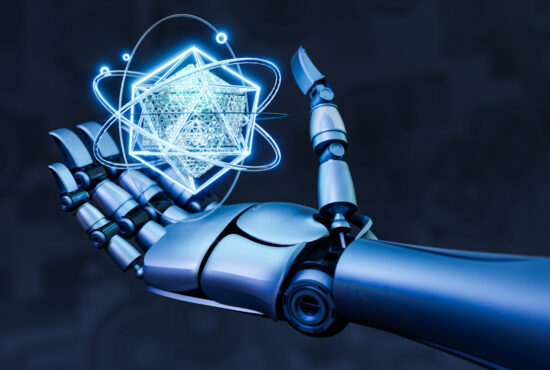The Internet of Things (IoT) and Industry 4.0, which connects everything digital, are terms we’re all increasingly acquainted with. However, the digital twin, the new kid on the block, has failed to gain traction.
The amazing thing about technology is how quickly it evolves. Over the last few decades, the scene has changed dramatically, with innovative technology becoming commonplace in ever-shorter timeframes. Many people believe that the digital twin will follow suit – in fact, that it is the only natural step forward for technology. In the simplest sense, a digital twin is a computer representation of the actual world. To put it another way, it’s a virtual representation of a physical thing, or set of objects, or system. Furthermore, the digital version (the twin) is updated in real-time to guarantee that the two are almost identical. Since the beginning of the century, the idea has been around. However, it has only been in the last several years that the technology required to completely implement the notion has been available. It collects data using a variety of sensors and components. After then, a digital counterpart – or ‘twin’ – is created. The level of detail in the cyber version will be determined by the quality and depth of the data utilised.
Simulation
Industry uses simulations to test goods, systems, processes, and concepts. Simulations are digital models created with computer-aided design software tools and are frequently utilised throughout the design phase. These models can depict aspects of a process or product in 2D or 3D, but they can also be built using mathematical principles rather than computer-based representations. The simulation evaluates results by introducing and testing various factors into the digital environment or interface. In most situations, simulations are utilised for design and, in certain circumstances, offline optimization. On the other hand, digital twins are employed in real-time throughout the complete design-execute-change-decommission lifecycle. At best, simulations can aid in understanding what might occur in the actual world. Digital twins can help you grasp not just what could happen, but also what is occurring right now (how the design is behaving in the real-world).
Pros and Cons
Compared to CAD-based simulations, digital twins provide a more adaptable and in-depth simulation procedure. These benefits include the ability to collect actual real-time data on an asset’s ongoing performance throughout its existence. A digital twin is also not dependant on a designer’s capacity to think of and then test all possible factors, allowing the designer to focus on fixing any real problems and making improvements.
A digital twin may also be used to inform larger business choices, and its breadth is only limited by the data that is given. Furthermore, digital twins can transmit data between multiple systems via the Internet of Things to offer a fuller picture of performance or for comparative reasons.
For monitoring important items such as wind turbines, the advantages of digital twin over a more basic, non-integrated CAD-based simulation are obvious. Digital twins, on the other hand, might be pricey due to the need for sensors and their connection with analytical software and a user interface. As a result, digital twins are often used only for the most vital assets or operations, where the expense is justified.
Digital twin and Industry 4.0
The fourth industrial revolution, often known as Industry 4.0, is a buzzword in the business world. It encompasses automation, data interchange, and manufacturing technology. Digital Twins are at the heart of this new industrial revolution, opening up a world of possibilities previously unimaginable. It replaces the old industrial strategy of “first construct, then modify” with a virtual system-based design process that extracts a far more efficient function from any equipment or system by comprehending its unique characteristics, performance, and possible concerns, if any. An operator can be educated on a virtual machine using Digital Twin instead of paying for a specialist trainer or simulator.With the advancement of Machine Learning and Artificial Intelligence, the robots will be able to take autonomy to the next level in the not-too-distant future. The function of the Digital Twin will evolve in such an autonomous world of industrial machines, and we may expect robots to become more self-aware. With minimum interaction from a manual operator, such machines will be capable of optimising their performance, coordinating with other machines, performing self-diagnosis, and self-repairing any flaws that may arise. Without a question, the world of manufacturing and engineering has a bright future ahead of it, and Digital Twins are an important step in that direction.
Whereas simulations can help you comprehend what might happen in the real world, digital twins let you compare and evaluate what might happen with what is currently happening.
This real-time perspective is given in a clear 3D format, making it simple to monitor and comprehend project status, equipment, production lines, and even hospital patients. This integrated approach of delivering real-time data can help prevent bad decisions, aid in preventative maintenance, and decrease accidents and costly downtime. Processes or assets that are digitally transformed can assist improve product design, improve troubleshooting, and generate new ideas. This is based on the data’s quality, which is where’smart’ gadgets and technology come in, allowing for a secure two-way data flow. This trove of information reveals fresh methods to improve the actual world, whether it’s through goods, procedures, or human-machine interactions.
